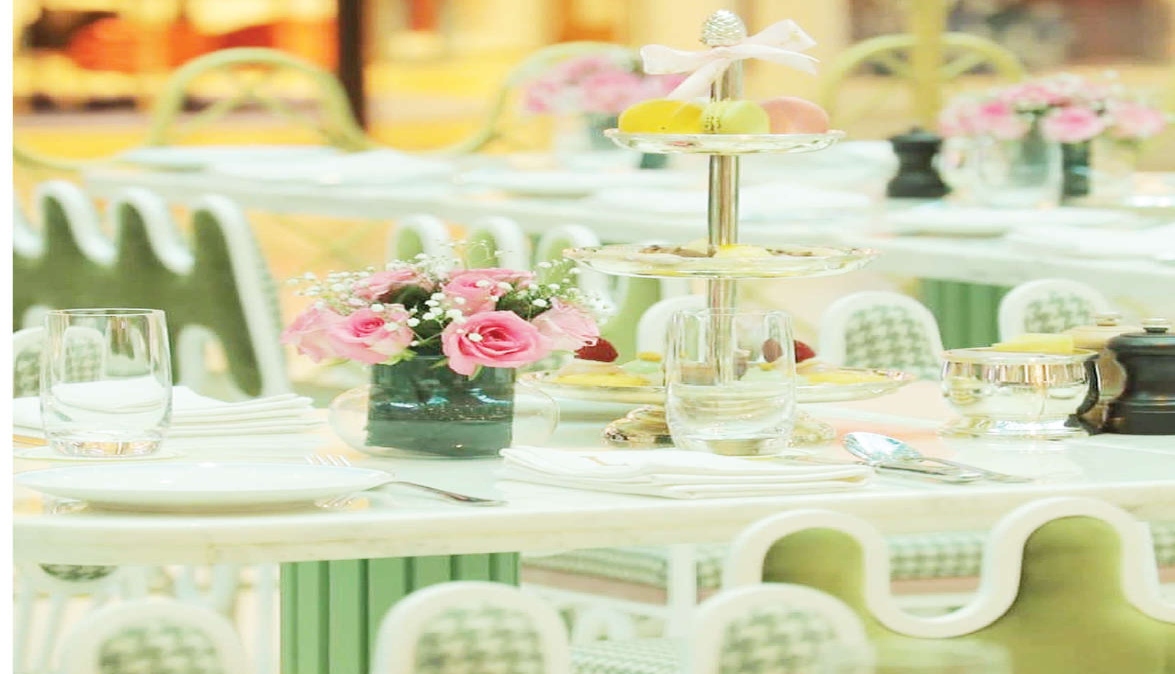
Last Saturday when famed French cafe Laduree launched in Gurugram, I got totally floored by their light as air macarons. A version of which is said to have been introduced in France during the decorative Renaissance era It was the French queen Catherine de’ Medici who brought her Italian pastry chef to her palace after marrying Henry II of France. A maestro at patisserie art, he introduced this meringue-based cookie to France in 1533. A sweet meringue-based confection, French macarons are made with egg white, icing sugar, granulated sugar, almond meal, and food colouring.

Sitting at the stunning Laduree Cafe Du The and biting into a splendid macaron, I was intrigued to trace the origin of macarons in France and how the French monarchy as well as the monastery played such an important role in making them an iconic dish. Another history nugget traces the macaron to two Carmelite nuns who sought asylum in Nancy during the French Revolution. They baked and sold the macaron cookies to pay for their housing. These nuns became known as the “Macaron Sisters”.

The art of French pastries started with the desire to have a sweet treat following a meal. Fruits and cheese were originally served after dinner, but to quench people’s lingering sweet cravings after a meal, the doors to the art of French pastries and confectioneries were opened. Thus the delectable, delicious, and dreamy world of cakes, pastries, candies, and classic French desserts was born. It was in the 1830s that macarons as we know them today came alive as two crisply whipped macarons sandwiched by jams, liqueurs, ganache, and spices. Originally called the “Gerbet” or the “Paris macaron,” this exotic version of the macaron was created by the legendary chef Pierre Desfontaines of the French patisserie Laduree.

It was not only in the 1930s that macarons began to be served two-by-two with the addition of jams, liqueurs, and spices. The macaron as it is known today, composed of two almond meringue discs filled with a layer of buttercream, jam, or ganache filling, was originally called the “Gerbet” or the “Paris macaron.” Pierre Desfontaines, of the French patisserie Laduree, has sometimes been credited with its creation in the early part of the 20th century, but another baker, Claude Gerbet, also claims to have invented it.
World-famous 159-year-old French confectionary brand Laduree, which was created in 1862, is synonymous with macarons globally, being one of the world’s best-known sellers of the double-decker macaron, of which 15,000 are said to be sold every day. Laduree was brought to India by the young, dynamic luxury entrepreneur Chandni Nath Israni. She says, “Indian food connoisseurs just can’t get enough of our macarons that are made from 100% natural ingredients.” Hence at every fancy party hosted by the Jindals, Ambanis, etc. a tower of macarons by Laduree is a must. Desserts have always been patronised by the French monarchy, which nurtured many legendary chefs like Marie-Antoine Careme, born in 1784, five years before the Revolution. He spent his younger years working at a patisserie until he was discovered by Charles Maurice de Talleyrand-Perigord and cooked for Napoleon Bonaparte.